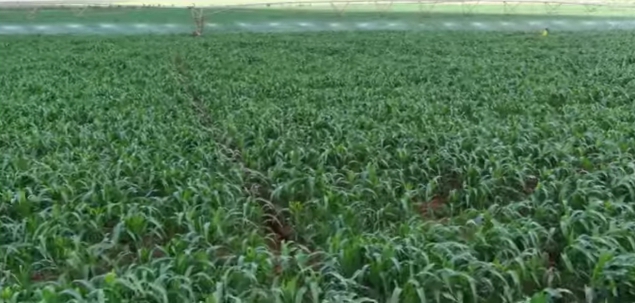How do you reduce feed costs on your farm?
It’s the million dollar question every poultry and livestock farmer in Kenya is asking right now.
Finding solutions to high animal feed costs in Kenya is urgent for every poultry and livestock farmer.
Feed prices often take up to 70% of production costs, leaving farmers struggling to stay profitable. The 2024 Competition Authority of Kenya (CAK) report shows maize, soybean, and sunflower products have risen by over 30% in just two years.
Last week, I shared the 7 main reasons why animal feed costs are high in Kenya.
If you missed it, you can read that article here and also check out the official CAK report.
Today, I’ll share my 5 practical and industry-level recommendations for solving this problem for good. These are not the usual “grow your own azolla” or “use black soldier fly” tips. They are strategies that, if implemented, can make farming more profitable — especially for layers farmers, which is what Secret Layers specializes in.
The first three ideas focus on reducing feed costs directly. The last two focus on increasing the price you can charge for your eggs, so even if feed prices stay high, you remain profitable.
1. GO BIG

Scaling up is one of the fastest ways to cut feed costs. Larger farms can negotiate better prices with suppliers because they buy in bulk.
Hypothetical example:
Imagine you have 5,000 layers. Instead of buying feed in 50 kg bags, you order a full truckload. Your supplier might offer you a 5–10% discount for the bigger order. That’s money saved before the feed even reaches your store.
Farmer action: If expanding your flock is not realistic, join or form a cooperative. When multiple farmers buy together, they gain the same bulk-buying power as a large farm.
Stakeholder action: Support cooperative models by offering bulk storage facilities, transport discounts, or collective purchasing agreements.
2. FORMULATE YOUR OWN FEEDS
Making your own feeds can lower your expenses because you are sourcing raw materials directly and avoiding retail markups. This is one of the most effective poultry feed cost solutions available to Kenyan farmers.
What to consider before starting:
Can you source maize, sunflower cake, or soybean meal at good prices?
Do you understand feed formulation for layers so you meet nutritional needs?
Hypothetical example:
Let’s say you have 1,500 layers. You decide to mix your own layers mash using maize bran, sunflower cake, and premixes bought directly from a miller. This could cut your feed costs by around 15–20% compared to agrovet prices.
Farmer action: Learn feed formulation from extension officers or trusted training providers. If the investment in mixers is too high, share equipment with other farmers.
Stakeholder action: Offer accessible training and affordable leasing of feed-mixing equipment to farmer groups.
3. PRODUCE OUR OWN FEED INPUTS

Kenya imports a lot of maize, sunflower, and soybeans for feed manufacturing. While countries like Uganda or Zambia may have larger production areas, we can still increase our own supply.
By producing these crops locally and processing them into sunflower cake or soybean meal, we reduce dependence on imports and stabilize prices.
Hypothetical example:
A group of 10 poultry farmers could partner with crop farmers to grow sunflower on 50 acres. The harvest could then be processed locally, giving them cheaper sunflower cake than the market price.
Farmer action: Secure long-term contracts with maize, sunflower, or soybean growers in your region to guarantee feed input supply.
Stakeholder action: Create incentives for local feed input production including subsidies, irrigation programs and assured market purchases.
4. VALUE ADDITION
We don’t have to keep selling eggs for less than Ksh 500 per tray. Through value addition, you can sell your eggs at much higher prices. Processing eggs into liquid, powdered, or specialty products for bakeries, pharmaceutical companies, and retailers allows you to charge more.
Hypothetical example:
If you partner with other farmers to invest in a small pasteurization unit, you could supply bakeries with liquid eggs at prices that translate to more than Ksh.1500 per tray in value.
Here’s Fridah Kaaria who processes liquid eggs in Central Kenya.

Farmer action: Form groups to share the cost of processing equipment or supply your eggs to existing processors.
Stakeholder action: Provide technical training for value-added egg production and help farmers access certified processing facilities.
5. EXPORT OUR EGG PRODUCTS
If Kenya can export coffee, tea, and miraa, we can also export eggs and processed egg products. Powdered and liquid eggs have long shelf lives and can be shipped regionally and internationally.
Hypothetical example:
A farmer cooperative could package powdered eggs and target markets in Rwanda, South Sudan, or even the Middle East. The cooperative could fetch premium prices if it meets export quality standards.
Farmer action: Focus on producing clean, high-quality eggs and join export-ready farmer groups.
Stakeholder action: Streamline export regulations for egg products and secure trade agreements with target countries.
REALITY CHECK : THE ROAD AHEAD
None of these solutions will happen instantly. Bulk buying requires capital. Feed formulation needs training. Exporting calls for regulatory support. But they are all achievable if farmers and stakeholders take coordinated steps. Even small actions today can lead to big changes in the industry.
WHAT CAN YOU DO TODAY?
Choose one or two strategies you can start working on now. Maybe that’s joining a buying cooperative, planting your own maize for feed, or exploring value addition opportunities.
The goal is not just to make more money, but to build a stronger, more resilient poultry industry in Kenya.
By applying these solutions to high animal feed costs in Kenya, we can create lasting change for farmers across the country.
WAIT!
Enter your details to grab a copy of my free guide and regular Layer Chicken Digest tips via email:
“6 SIMPLE STEPS TO START A PROFITABLE LAYER POULTRY FARM”

See you next Friday!
Carlos Deche
secretlayerske@gmail.com
carlosdeche4040@gmail.com
Leave a Reply